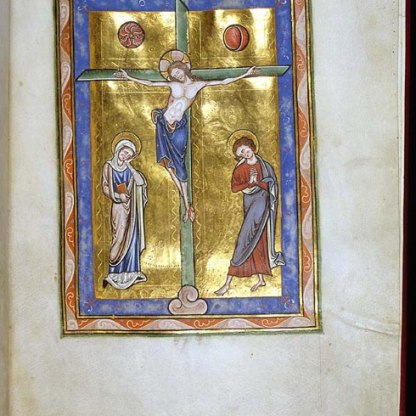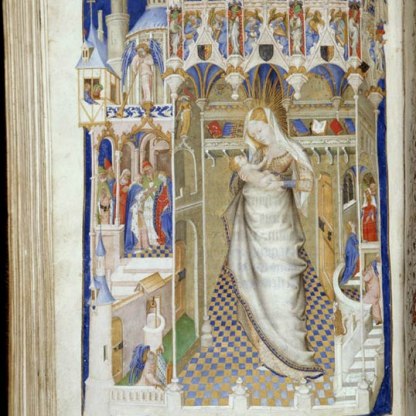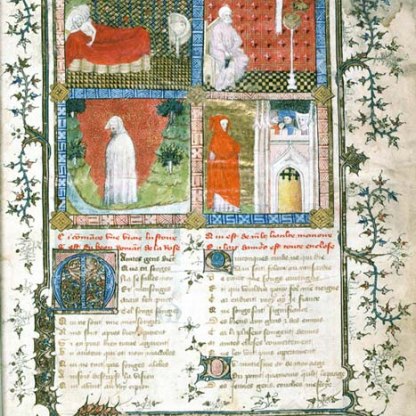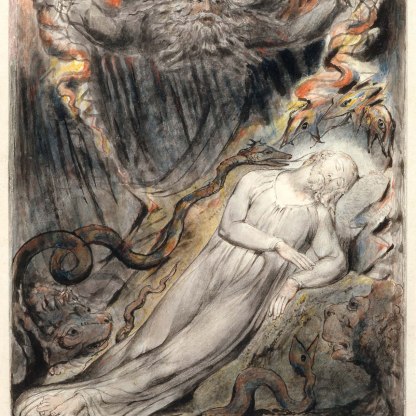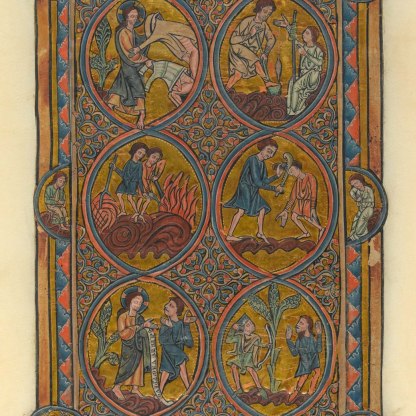In the Margins
What are these fantastic monsters doing in the cloisters under the very eyes of the brothers as they read? What is the meaning of these unclean monkeys, strange savage lions and monsters? To what purpose are here placed these creatures, half beast, half man? I see several bodies with one head and several heads with one body. Here is a quadruped with a serpent's head, there a fish with a quadruped's head, then again an animal half horse, half goat ... Surely if we do not blush for such absurdities we should at least regret what we have spent on them.
St Bernard of Clairvaux, twelfth century
St Bernard was embarrassed by the gargoyles and grotesques carved into the fabric of so many medieval churches and cathedrals. He would also undoubtedly have reacted against the margins of many contemporary religious books, populated as they are by grotesque crossbreeds or impossible biological freaks – like the gryllus that we meet at the bottom of folio 55v of an early fourteenth-century Book of Hours in the Fitzwilliam, [MS.242]: a wild human head set upon a pair of animal's legs.
The meaning and significance of these marginal ‘drolleries’ have never been fully explained. Are they merely doodles, purely decorative devices? Or do they somehow comment upon the content of the book? Do they demand of the viewer a response more serious than laughter?
Whatever their function, the subsidiary decorations in the Metz Pontifical are certainly enjoyable. The solemnity of all rites conducted by the bishop is lightened by the lower margins of each page where the artist has included small, usually humorous tableaux. Some parody episodes from the Bible such as that on folio 7r, where a hare with a sling approaches a knight in chainmail, an absurd parallel to the story of David and Goliath.
The hare is the ‘hero’ of many marginal adventures in the book he and a colleague lead a bewildered and bedraggled man to prison. Later, he and his comrades lay siege to a city.
There seems to be a general antagonism between man and the animal world in the pictures. Although on one page we see the hare and a man exchanging the kiss of peace, a particularly macabre note is struck in the illustration on folio 74r, left, where a naked man is shown tied to a tree. One hare stands over him wielding a club while another kneels down and has begun to skin him alive.
Other highlight objects you might like
Other pathways and stories you might like
Sign up to our emails
Be the first to hear about our news, exhibitions, events and more…

